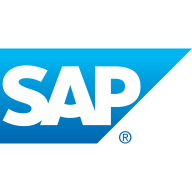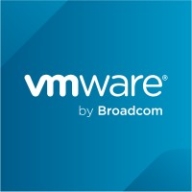

VMware Tanzu Data Solutions and SAP HANA compete in the data solutions market, focusing on scalability and robust data features for massive parallel processing environments. VMware Tanzu appears to have the upper hand due to its cost-effective open-source platform and licensing flexibility, making it appealing to those looking for comprehensive data orchestration without high financial commitments.
Features: VMware Tanzu is praised for its MPP architecture, support for procedural languages, and integration capabilities with big data. It efficiently handles data using ANSI-standard SQL and supports parallel processing. SAP HANA is noted for its in-memory database architecture, ensuring rapid data processing and strong data compression, with seamless integration across multiple systems.
Room for Improvement: VMware Tanzu users seek enhancements in query stability and better integration with big data stacks, along with more frequent updates. SAP HANA users desire improvements in pricing structure, scaling, better third-party software integration, and enhanced documentation and user interface.
Ease of Deployment and Customer Service: VMware Tanzu offers deployment flexibility across on-premises, public, and hybrid cloud environments. It provides strong technical support, although some complexities are noted. SAP HANA mainly thrives in on-premises settings but supports hybrid deployments, providing robust yet costly technical support, appreciated for seamless service despite its high costs and complexity.
Pricing and ROI: VMware Tanzu stands out for its competitive pricing due to its open-source nature, ensuring strong ROI with flexible deployments. It appeals to budget-conscious enterprises seeking comprehensive data management solutions. SAP HANA requires significant investment, justified by its expansive features and in-memory architecture, offering substantial ROI for large enterprises needing rapid data processing and sophisticated analytics.
We do not feel we're getting value for the investment due to the additional resources needed for integration and maintenance.
SAP HANA is a cost-saving solution that helps save money and serves as a time-saving solution that helps save time.
The community support is better than the official SAP support.
We often do not know when our ticket will be handled or who is handling it, and we can wait from one to four days for a reply, which is unexpected.
While issues are resolved eventually, the first level of support is not as good as we would like.
Our operations have grown from a hundred data operations a day to as many in a couple of seconds.
The scalability rating is based on the ability to expand.
There is enough scalability offered by SAP to meet our deployment needs.
Most of our functions or jobs are queued due to that.
We recently faced customer data loss during the cluster handover or failover fallback.
We have not had any problems in the last seven to eight years.
Regarding stability, they are using legacy systems and have implemented SAP HANA.
I have faced stability issues, mainly due to the storage my organization has, though I am not sure if it's specifically due to the tool.
The main issue is the ecosystem, which lacks the widespread support that SQL enjoys.
The problem is the price; it's too expensive for what it actually delivers.
Many customers still prefer Oracle, possibly due to cost or familiarity, despite SAP mandating that they have to go to SAP HANA.
It's a recurring subscription model, which is expensive compared to legacy systems with just a maintenance fee.
The pricing of SAP HANA is quite expensive.
I would rate the price for SAP HANA as high.
The concept enhances speed, allowing the database to serve and move data quickly.
It allows some tables to be stored in a column base, others in a row base, and the In-Memory functionalities are mostly the highlight of SAP HANA, especially compared to disk-based memory users.
This architecture allows for faster data processing and real-time analytics that were not possible with traditional databases.
The product is not complex; I do not have to create stored procedures, functions, or views.
| Product | Market Share (%) |
|---|---|
| SAP HANA | 9.7% |
| VMware Tanzu Data Solutions | 0.4% |
| Other | 89.9% |


| Company Size | Count |
|---|---|
| Small Business | 26 |
| Midsize Enterprise | 11 |
| Large Enterprise | 61 |
| Company Size | Count |
|---|---|
| Small Business | 30 |
| Midsize Enterprise | 10 |
| Large Enterprise | 48 |
SAP HANA, also known as SAP High-performance Analytics Appliance, is a multi-model database that stores data in its memory, allowing users to avoid disk storage. The product combines its robust database with services for creating applications. SAP HANA is faster than other database management systems (DBMS) because it stores data in column-based tables in main memory and brings online analytical processing (OLAP) and online transaction processing (OLTP) together.
The column-oriented in-memory database design allows users to run high-speed transactions alongside advanced analytics, all in a single system. This provides companies with the ability to process very large amounts of data with low latency and query data in an instant. By combining multiple data management capabilities, the solution simplifies IT, helps businesses with innovations, and facilitates digital transformation.
The solution is structured into five groups of capabilities, categorized as:
There are three more SAP products that work alongside SAP HANA and complete the experience for users together. SAP S/4HANA Cloud is a ready-to-run cloud enterprise resource planning (ERP). SAP BW/4HANA is a packaged data warehouse, based on SAP HANA, which allows users to consolidate data across the enterprise to get a consistent view of their data. Finally, SAP Cloud is a single database as a service (DBaaS) foundation for modern applications and analytics across all enterprise data. All three products can combine with SAP HANA to deliver to users an optimized experience regarding their data.
SAP HANA Features
Each architectural group of capabilities of SAP HANA has various features that users can benefit from. These include:
SAP HANA Benefits
SAP HANA provides many benefits for its users. These include:
Reviews from Real Users
According to a database consultant at a pharma/biotech company, SAP HANA is a very robust solution with good data access.
Bruno V., owner at LAVORO AUTOM INF E COM LTDA, likes SAP HANA because the product offers advanced features, helps reduce hours, and makes it easy to find what you need.
VMware Tanzu is a robust platform tailored for data warehousing, complex analytics, BI applications, and predictive analytics. It excels in scalability, performance, and parallel processing, enhancing data handling efficiency. Users report significant productivity improvements and streamlined operations, making it ideal for comprehensive data solutions.
We monitor all Relational Databases Tools reviews to prevent fraudulent reviews and keep review quality high. We do not post reviews by company employees or direct competitors. We validate each review for authenticity via cross-reference with LinkedIn, and personal follow-up with the reviewer when necessary.